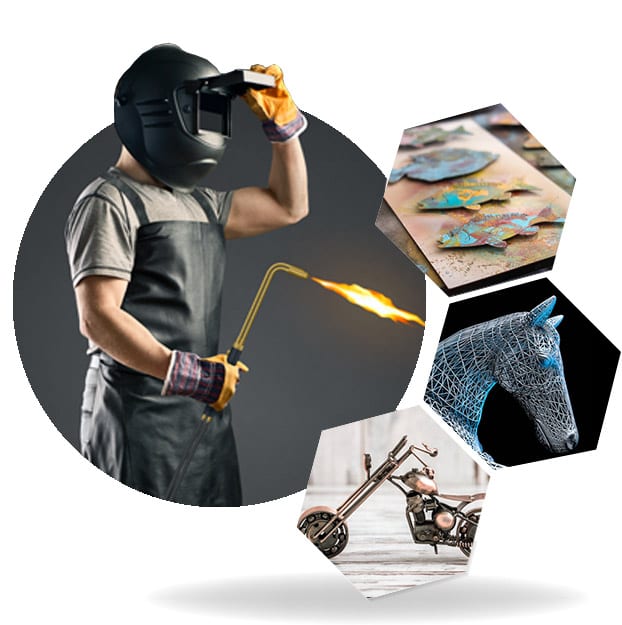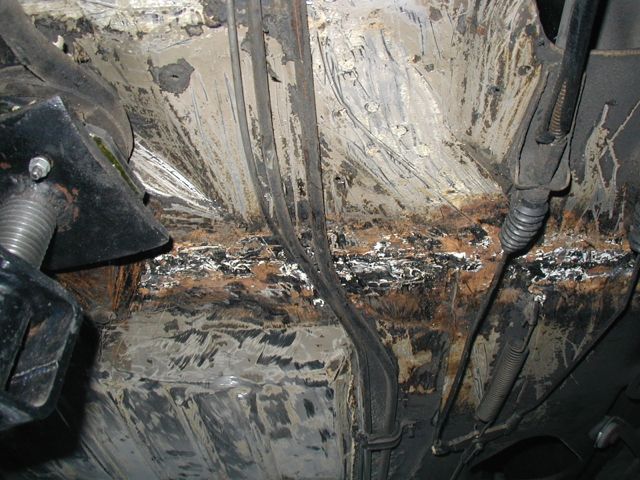Top welding defects solved efficiently by Montana Mobile Welding and Repair Belgrade Fabrication
Wiki Article
Everything about Welding: Key Insights Into Techniques and Finest Practices for Success
Welding incorporates a selection of strategies, each matched for specific products and applications. Understanding these techniques, such as GMAW, SMAW, and TIG, is necessary for accomplishing perfect results. The right tools and security practices can not be overlooked. As preparation and troubleshooting play critical roles in the welding procedure, understanding these components can significantly boost the quality of the last product. What are the vital elements that ensure a successful weld?Recognizing Various Welding Strategies
Welding methods include a variety of methods, each suited to certain applications and materials. Amongst one of the most typical strategies are Gas Metal Arc Welding (GMAW), Secured Steel Arc Welding (SMAW), and Tungsten Inert Gas Welding (TIG) GMAW, also called MIG welding, is prominent for its rate and adaptability, making it optimal for slim materials. SMAW, or stick welding, is preferred for its simplicity and efficiency in exterior atmospheres, specifically with thicker steels. TIG welding supplies precision and control, making it ideal for detailed work and non-ferrous metals (Fabrication). Each strategy has its distinct advantages and considerations, permitting welders to select the very best technique based on the job's requirements, material kind, and desired outcomes. Recognizing these strategies is important for effective weldingImportant Welding Equipment and Devices
While different welding techniques require details skills, the ideal equipment and tools are similarly crucial for accomplishing top quality outcomes. Important welding devices consists of welding equipments, which differ depending upon the strategy-- such as MIG, TIG, or stick welding. Protective gear, including gloves, safety helmets, and aprons, guarantees security and convenience throughout the process. Additionally, clamps and components aid protect products in position, ensuring accuracy in welds. Consumables like welding poles, cable, and protecting gas are likewise vital elements that affect the quality of the weld. Tools such as cutters and grinders promote surface area prep work and post-weld completing, adding to a specialist end result. Buying premium equipment ultimately enhances the efficiency and effectiveness of welding tasks.Safety And Security Practices in Welding
Appropriate safety and security practices are vital in the welding industry to secure workers from potential hazards. Welders must use ideal individual protective tools (PPE), consisting of helmets with appropriate shading, handwear covers, and flame-resistant clothes. Adequate air flow is vital to minimize direct exposure to hazardous fumes and gases produced throughout the welding process. Additionally, workers must be learnt the proper handling of welding tools to stop mishaps. Fire precaution, such as maintaining combustible materials far from the welding area and having fire extinguishers easily available, are required. Routine evaluations of equipment and work areas can help determine prospective hazards before they result in accidents. By adhering to these safety techniques, welders can develop a much safer working setting and lessen dangers related to their trade.Preparing Materials for Welding
Preparing materials for welding is an important step that considerably influences the high quality and integrity of the end product (Belgrade Fabrication). Appropriate prep work involves cleaning up the surface areas to eliminate pollutants such as oil, corrosion, and dirt, which can endanger the weld. Methods such as grinding, fining sand, or using solvents are commonly utilized to attain a tidy surface area. Additionally, ensuring that the materials mesh comfortably is necessary; gaps can bring about weak welds. It's additionally vital to think about the placement and positioning of the components, as this will certainly affect the ease of welding and the last result. Selecting the suitable filler product and making certain compatibility with the base steels is important for attaining solid, durable welds.Tips for Getting High-Quality Welds
Attaining top quality welds requires attention to information and adherence to best practices throughout the welding process. Correct joint preparation is crucial, making certain surfaces are cost-free and clean from contaminants. Picking the ideal filler product and welding technique based on the base metals is vital for excellent bonding. Keeping consistent travel speed and angle while welding can promote and stop defects harmony. Additionally, controlling warm input is important; too much warmth can cause bending and compromised joints. If required, frequently examining the welds during the process allows for prompt modifications. Using proper post-weld treatments, such as cleaning and stress relief, can improve the toughness and integrity of the weld, inevitably guaranteeing an effective end result.Repairing Common Welding Issues
Welding typically presents obstacles that can impact the high quality and honesty of the end product. Usual problems such as porosity, irregular weld beads, and getting too hot can emerge, each calling for particular repairing techniques. Understanding these troubles is important for welders to boost their abilities and accomplish perfect results.Porosity Problems Clarified
Although porosity can usually be forgotten, it continues to be a critical problem in welding that can compromise the stability of a completed product. Porosity refers to the existence of small gas pockets within the weld grain, which can weaken the joint and lead to early failing. This trouble usually arises from contaminants, moisture, or incorrect shielding gas insurance coverage throughout the welding procedure. To minimize porosity, welders ought to verify that the base products are clean and completely dry, use suitable securing gases, and keep regular welding criteria. Frequently evaluating the equipment and atmosphere can likewise assist recognize possible problems before they show up in the weld. Dealing with porosity efficiently is important for achieving solid, resilient welds that fulfill high quality standards.
Inconsistent Weld Beans
Irregular weld grains can greatly affect the quality and stamina of an ended up item. Various aspects add to this problem, consisting of incorrect traveling rate, incorrect amperage settings, and inconsistent electrode angles. When the welder moves as well rapidly, a grain may show up slim and lack infiltration, while moving as well gradually can cause too much buildup. Furthermore, making use of the incorrect amperage can lead to either undercutting or too much spatter, both of which compromise weld stability. The welder's strategy, such as irregular lantern movement, can additionally bring about unequal grain look. To reduce these problems, welders should concentrate on preserving steady, controlled motions and making sure proper equipment settings to accomplish harmony in their welds. Consistency is vital to achieving reliable and solid welds.Overheating and Warping Issues
Too much warmth during the welding process can bring about significant getting too hot and warping issues, affecting the structural honesty of the workpiece. These issues typically show up as distortion, which can endanger alignment and fit-up, making further setting up challenging. Elements contributing to overheating consist of the option of welding parameters, such as voltage and travel speed, as well as the sort of material being welded. To alleviate these problems, welders must keep regular travel speed and suitable warmth input while keeping an eye best site on the workpiece temperature level. In you can try here addition, preheating or post-weld warmth treatment can aid minimize stress and anxieties brought on by rapid air conditioning - Montana Mobile Welding and Repair Belgrade. Regular inspection and adherence to best techniques are essential in protecting against getting too hot and guaranteeing the longevity and integrity of welded frameworksOften Asked Concerns
What Are the Occupation Opportunities in the Welding Market?
The welding sector supplies diverse profession chances, including settings as welders, teachers, assessors, and designers. Experts can work in production, construction, aerospace, and automobile industries, gaining from solid demand and affordable wages in different functions.Exactly How Can I Enhance My Welding Rate Without Sacrificing Top Quality?
To enhance welding speed without compromising high quality, one need to practice effective methods, maintain devices, optimize setups, and improve hand-eye coordination. Normal training and seeking comments can also significantly add to achieving faster, premium welds.What Certifications Are Readily Available for Welders?
Various accreditations exist for welders, consisting of those from the American Welding Society (AWS), the National Facility for Building Education And Learning and Study (NCCER), and various industry-specific organizations. These qualifications improve employability and demonstrate skill efficiency.Exactly How Does Welding Affect the Characteristics of Metals?
Welding influences the buildings of metals by changing their microstructure, which can lead to modifications in firmness, strength, and ductility. Warm input and air conditioning rates throughout the process considerably influence these product features.Can I Bonded Dissimilar Metals With Each Other?

Report this wiki page